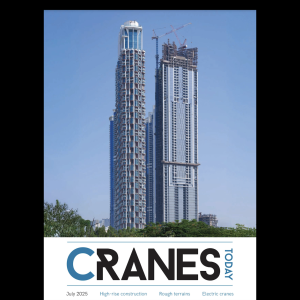Before launching a new model, manufacturers perform an extensive cost-benefit analysis to assess whether it would be profitable to do so. They would look at the current and anticipated demand for a model with those characteristics as well as the cost of manufacturing one. I would guess that the expectation of profits would also be the main trigger behind a decision to enter the market for a new product type.
The luffing jib market is concentrated in a smaller number of countries than other tower crane types. Among those countries are the UK, USA, Australia, Canada; markets big enough to explain the high number of models available. What I found puzzling was the number of manufacturers that have recently entered the hydraulic luffer market, as it is even smaller.
In the relevant feature in this issue, the manufacturers highlight the multiple benefits of this crane type, which could be appreciated by many markets beyond the current ones. Some brands that already have units of their hydralic luffers operating in countries other than the UK and Australia say they have received very positive feedback from those customers.
An obstacle manufacturers will face in the process of making the hydraulic luffer concept more appealing globally, is the habits of industry players. It is widely recognised that many, if not most, crane rental companies can be reluctant to change the types of machines they are using.
This does not seem to worry the manufacturers, as many are already looking to enhance their hydraulic luffer portfolio. If the evolution of this product type affects the offering of others, maybe the market players will not have a choice but embrace this concept.
A similar scenario could be seen in the reachstacker industry. In this issue’s feature on reachstackers used for container handling, you will read about the manufacturers' investment in more environmentally-friendly solutions. They have already incorporated technologies in their machines to reduce fuel consumption. They are also looking into electric, hybrid and fuel cell-powered machines.
This is a market dominated by diesel, so the purchase of such equipment will demand a change of habits as well as infrastructure. They acknowledge that it will be a long process, but are optimistic. In the case of mobile harbour cranes, covered in another feature in this issue, eco-friendly solutions are already finding a market.
As customers are for-profit businesses, when they find that a new technology will bring a higher return on investment than their existing one, I would expect the force of habit to diminish.
Sotiris Kanaris, Editor
sotiris.kanaris@cranestodaymagazine.com






